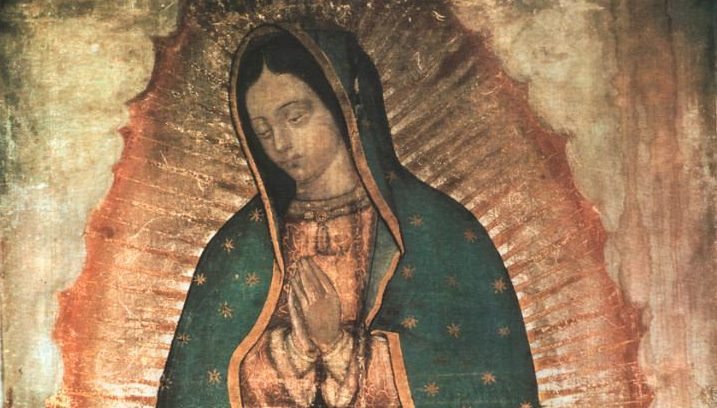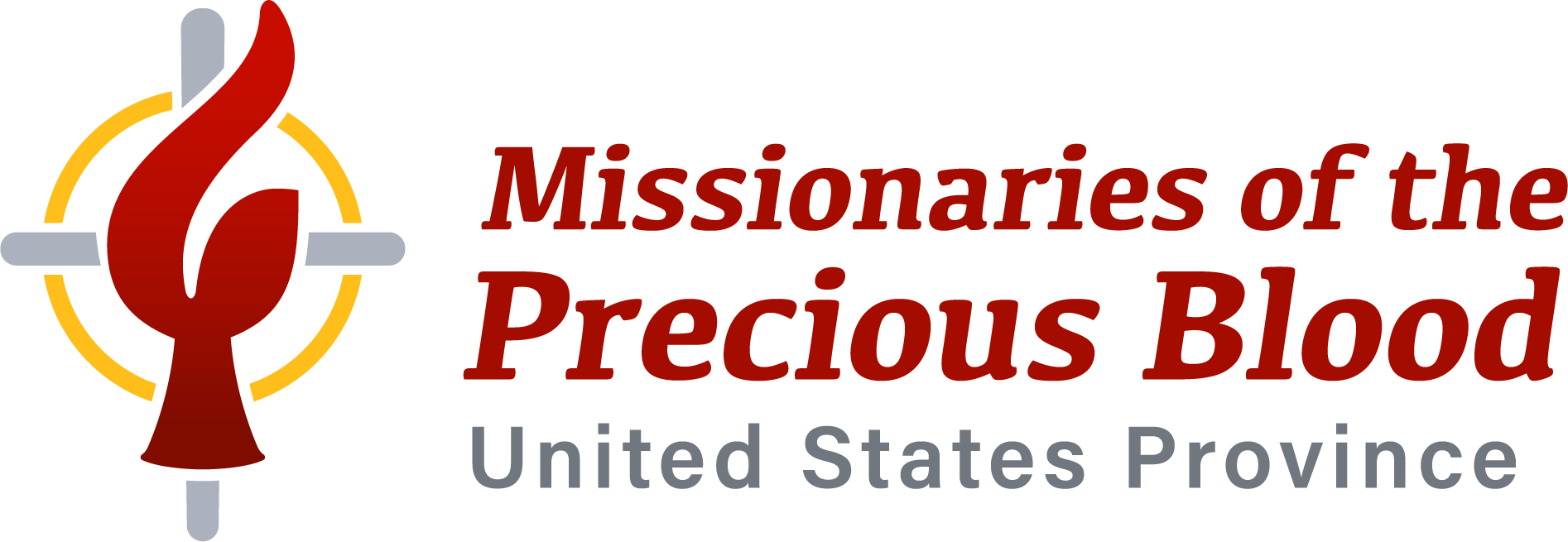 by Maureen Lahiff, Companion and Member of the Justice and Peace Committee
by Maureen Lahiff, Companion and Member of the Justice and Peace Committee
So why is the Irish girl writing about La Virgen de Guadalupe, La Morenita [the Little Brown One] del Tepeyac? Because she belongs to us all, not just to those of Mexican heritage. Or perhaps I should say, we all belong to her. She’s a perfect companion for Precious Blood people, because she represents the presence of God’s love and care for those who are on the margins; for those who have been defeated; for those who are mestiza as she is, a mixture of ethnicities, heritages and cultures.
I also belong to Guadalupe because, although I was born in Ohio, I now live in Alta California, where there is no majority, and where we were part of New Spain and then Mexico before we were part of the US.
You are probably familiar with the story: The apparitions on Tepeyac hill in December 1531, just ten years after the brutal conquest of Tenochtitlán [Mexico City] the capital of the Aztec empire, under the leadership of Hernán Cortés, to the Catholic Aztec Cuauhtlatoatzin, Saint Juan Diego. (His feast is on December 9, the date of the first apparition; we lose it to the Second Sunday of Advent this year.) The appearance of Mary with mestiza features and in native dress, with a belt that is a sign of pregnancy. Her words to Juan Diego; “You have nothing to fear; am I not here who am your mother?” The Castilian red roses that she caused to appear as a sign for Bishop Juan de Zumárraga, and her image on his tilma when he opened it to show the roses to the bishop.
The image of Our Lady of Guadalupe was identified with the “woman clothed with the sun, with the moon under her feet,” from Revelation 12 by Miguel Sanchez in 1648. This text is one of the options for the first reading for the Mass for her feast. There are also two choices for the gospel at Mass, the same one as the Annunciation story that presents preachers on December 8 with such a challenge, and my preference, the Visitation of Mary to Elizabeth. Alas, only the first sentence of the Magnificat is included. (The Magnificat is my personal touchstone for Mary, especially the kick-ass setting The Canticle of the Turning by Rory Cooney.)
Our Lady of Guadalupe has accompanied people seeking their rights since 1810, when Father Miguel Hidalgo rallied the people of New Spain under her image in the Mexican Revolution. More recently, she accompanied United Farm Workers, Pilipino and Chicanx, and now she accompanies migrants and refugees. Xicana feminists identify with her, too, re-imaged in contemporary dress.
After two centuries of local celebrations, Pope Benedict XIV approved the liturgical texts for the Mass and the Liturgy of the Hours and proclaimed Our Lady of Guadalupe as the patroness of New Spain. Popes since then have given her various titles. Pope Pius XI declared her patroness of the Philippines in 1935. Pope John Paul II proclaimed her Patroness of the Americas. (If you remember the series of synods leading up to the jubilee, John Paul II insisted on treating North and South America as one continent.)
This is not the place for a detailed history of the image, its possible connections to Aztec images and deities, its veneration, and the shifting dates for the feast. However, she got here, she is with us now as a symbol of the presence of God’s love in the mestizaje , the challenging and thrilling mix that confronts the US and the Catholic Church in the US. Guadalupe can bring us together, as the opening prayer for her Mass proclaims.
God of power and mercy,
you blessed the Americas at Tepeyac
with the presence of the Virgin Mary of Guadalupe.
May her prayers help all men and women
to accept each other as brothers and sisters.
Through your justice present in our hearts
may your peace reign in the world.
